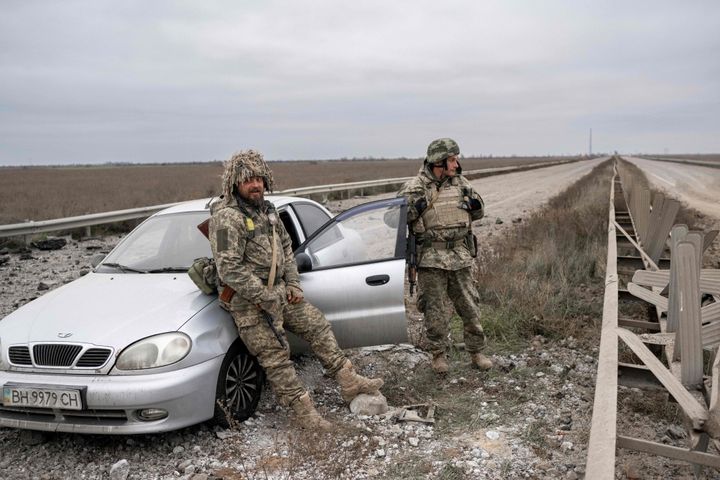
The ongoing war in Ukraine may be about to come to a standstill as the harsh winter creeps in.
UK intelligence at the Ministry of Defence suggested on Monday that the harsh winter conditions seen in both Ukraine and Russia are expected to alter the conflict significantly until spring returns next year.
It explained: “Changes to daylight hours, temperature and weather will present unique challenges for fighting soldiers. Any decisions that the Russian General Staff make will be in part informed by the onset of winter.”
Daylight will drop to less than nine hours a day (compared to up to 16 hours during the summer, when the frontline seemed to fluctuate significantly).
“This results in fewer offensives and more static defensive frontlines,” the MoD explained. “Night vision capability is a precious commodity, further exacerbating the unwillingness to fight at night.”
While temperatures have lingered around 13C across autumn, in December it’s expected to drop to zero.
“Forces lacking in winter weather clothing and accommodation are highly likely to suffer from non-freezing cold injuries.”
The MoD also said the “golden hour” – the last hour of sunlight before sunset – was a crucial time for either side to collect wounded troops from the battlefield.
This time is cut by half due to the winter, “making the risk of contact with the enemy much greater”.
Rain, wind and snow are all more likely too, potentially worsening morale within Russian ranks and making it hard to keep weapons in working condition.
It’s widely believed that Moscow ordered the invasion of Ukraine in February this year because it was the beginning of Spring, making such an attack easier for Russian troops.
Russia has already pulled out of the city of Kherson, the only regional capital its forces had captured since the war began.
According to the New York Times, US officials believe this is partially due to fears that soldiers would be isolated and cut off from supplies come winter – although the advance of the Ukrainian counteroffensive played a part too.
The winter standoff could last up to six months, as even when temperatures thaw, land is likely to be muddy, slowing down the troops.
US officials reportedly also think Russia will intensify its attacks on infrastructure during this time while Ukraine could step up its campaign to show it can strike back, perhaps even hitting Russian-controlled areas inside the European country.
Both sides are expected to build up their supplies too for a renewed push in February.
